Homeowners thinking about switching to renewable energy need to know the costs. A solar panel cost estimator is a great tool. It helps figure out how much you can save with solar energy systems.
With a solar panel cost estimator, you can understand your energy costs better. It shows the good things about solar energy. For more on installing solar panels, check out our guide on how to install solar panels.
Key Takeaways
- Understand the financial benefits of using a solar panel cost estimator.
- Assess how much you can save on energy costs with solar energy.
- Make smart choices about moving to renewable energy.
- Look into incentives for installing solar panels.
- Compare the efficiency of different solar panel types.
Why Use a Solar Panel Cost Estimator?
Using a solar panel pricing calculator is key to understanding solar costs. It helps homeowners make smart energy investment choices.
Understanding the Importance of Accurate Estimates
Getting accurate estimates for estimating solar panel costs is vital. A good solar panel cost estimator considers many factors. These include the system size, panel type, and installation costs. EnergySage says the average cost in the U.S. is about $2.75 per watt. This makes precise estimates essential.
Accurate estimates offer several benefits:
- They help understand total upfront costs.
- They show possible savings on energy bills.
- They aid in making smart financing choices.
Benefits of Solar Energy at Home
Solar energy brings many advantages to homeowners. It lowers energy costs and reduces carbon footprint. By estimating solar panel costs accurately, homeowners can see their energy bill savings. A typical system can save $400 to $1,000 annually.
Solar energy is a clean, renewable power source. It greatly reduces fossil fuel use. (Source)
“The use of solar energy is a significant step towards reducing our carbon footprint and mitigating climate change.”
How Solar Panel Cost Estimators Work
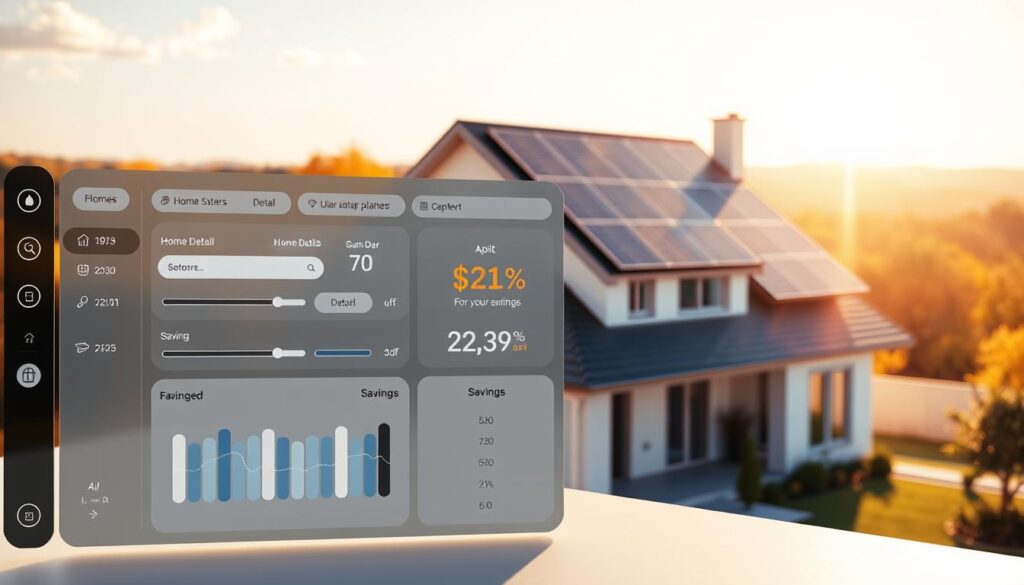
To understand the cost of solar panels, it’s key to know how cost estimators work. These tools give a detailed look at the costs of installing solar panels. They consider many factors that can change the total cost.
Key Metrics That Affect Costs
Several important metrics are looked at when figuring out solar panel costs. These include:
- The size of the solar panel system needed for your energy use
- The type and quality of solar panels you choose
- Installation costs, like labor and equipment costs
- The complexity of the installation process
For a deeper look, you can use a solar cost calculator. It gives insights into estimated costs based on your needs.
The Role of Location and Sunlight Exposure
Your location and sunlight exposure are key in determining solar panel costs and efficiency. Places with more sunlight need smaller systems to produce the same electricity as larger systems in sunnier areas.
Also, the orientation and angle of your roof matter for getting the most sunlight. If you’re hiring pros, choose top-rated solar installers. They’ll make sure your system is set up right for the best energy output.
Factors Influencing Solar Panel Costs
Knowing what affects solar panel costs is key for those wanting to use renewable energy. The price of solar panels comes from many factors, not just one.
Panel Type and Efficiency
The cost of solar panels depends a lot on their type and how well they work. Monocrystalline, polycrystalline, and thin-film solar panels are the main types. Each has its own efficiency and price.
- Monocrystalline panels are very efficient and last long, but they cost more.
- Polycrystalline panels are a good middle ground, balancing cost and efficiency.
- Thin-film panels are less efficient but cheaper to make, which lowers the initial cost.
Installation Costs and Labor Expenses
How much it costs to install and the labor needed also affects the price. The size of the system and the roof’s condition can change labor costs.
Using a solar panel cost calculator can help estimate total costs, including installation and labor.
Incentives and Rebates in Your Area
Incentives and rebates can greatly lower the cost of solar panels. Homeowners can get help from federal, state, and local programs, like tax credits and rebates.
“The solar investment tax credit (ITC) allows homeowners to claim a tax credit of up to 26% of the total cost of their solar panel system.”
Looking into these incentives can make solar energy more affordable. It can also improve the investment’s return.
Comparing Different Solar Panels
It’s important to know the differences between solar panel types. This helps make your solar panel system price estimator more accurate.
Solar panels come in three main types: monocrystalline, polycrystalline, and thin-film. Each type has its own strengths and weaknesses.
Monocrystalline vs. Polycrystalline
Monocrystalline solar panels are very efficient, with rates between 18% and 22%. They are made from a single crystal, making them look uniform.
Polycrystalline panels are made from many crystals. They are less efficient, with rates between 15% and 17%. But, they cost less to make.
The main differences are:
- Efficiency: Monocrystalline panels are more efficient.
- Cost: Polycrystalline panels are cheaper.
- Aesthetics: Monocrystalline panels look more uniform.
Thin-Film Solar Panels: Pros and Cons
Thin-film solar panels have a thin layer of photovoltaic material on a substrate. They are less efficient, with rates from 7% to 13%.
Despite their lower efficiency, thin-film panels have benefits. They are:
- Flexible: They can go on different surfaces.
- Low Cost: They are cheaper to make than other panels.
- Good in Low Light: They work better in dim conditions.
But, they also have downsides. They need more space to produce the same electricity as other panels.
Calculating Your Energy Needs
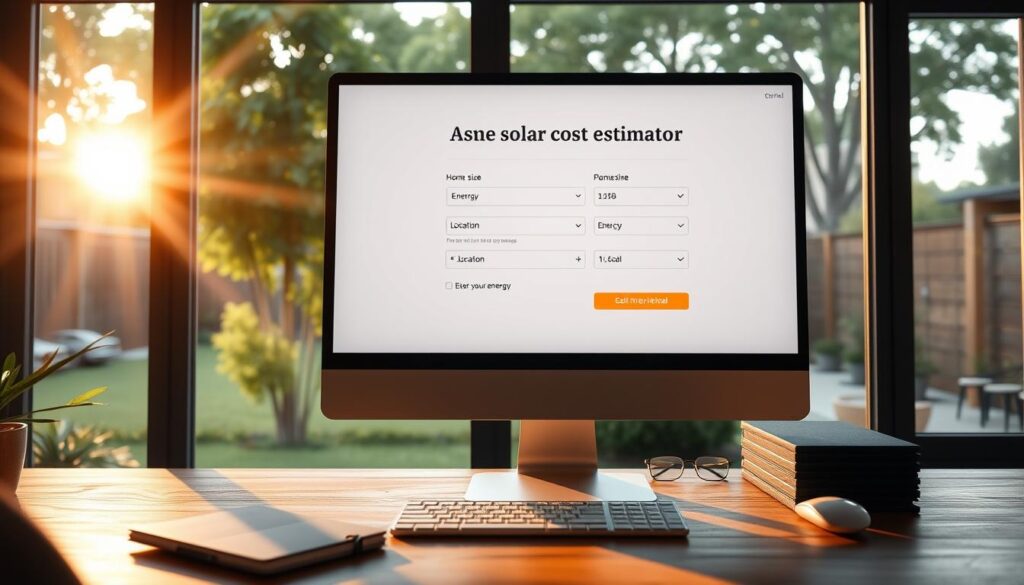
Understanding how much energy you use is key to using solar energy well. To find the right solar panel size for your home, you must know your energy needs.
Analyzing Your Average Energy Consumption
Begin by looking at your energy use over the last year. Check your utility bills to see how much energy you use each month. This info helps you guess how much energy you’ll need in the future.
Think about how your energy use changes with the seasons. For example, you might use more energy in winter to stay warm. A home solar cost estimator tool can help you account for these changes.
Estimating Future Energy Needs
When guessing your future energy needs, think about any big changes. Are you getting an electric car or new appliances? These can up your energy use, so your solar system should be big enough.
Also, think about making your home more energy-efficient. Upgrading to LED lights or better insulation can cut down your energy use. This might mean you need a smaller solar system.
By figuring out your energy needs well, you can make sure your solar system fits your needs. This way, you get the most out of your solar energy investment.
Understanding Financial Incentives
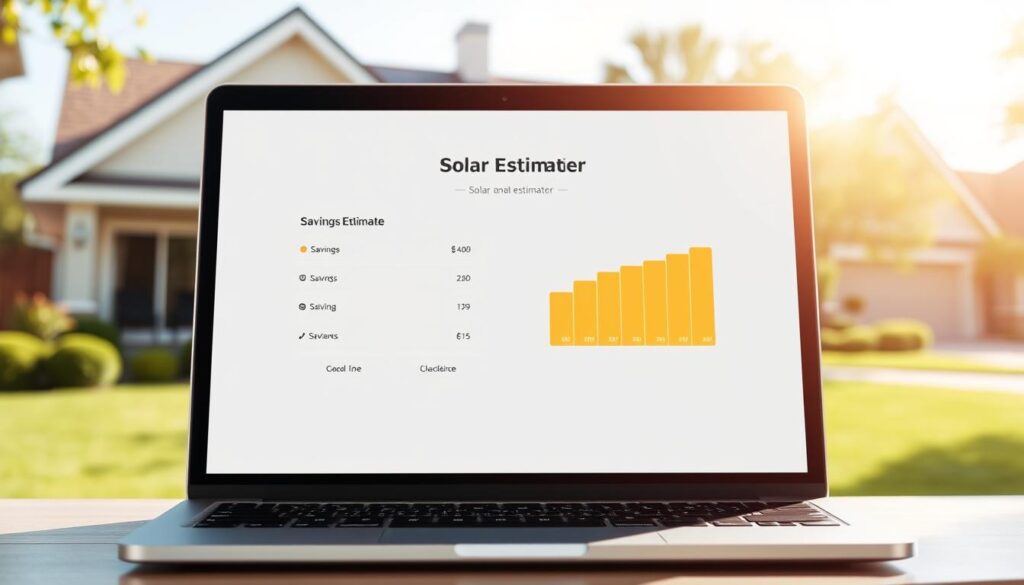
Homeowners can lower the cost of solar panels by using financial incentives. These incentives make solar energy cheaper and offer a good return on investment.
Federal Solar Tax Credit Overview
The Federal Solar Tax Credit is a big help for homeowners. It lets you deduct a big part of the solar panel costs from your taxes. Right now, you can get 30% of the total cost back, including labor and equipment.
To get this credit, you need to file Form 5695 with your taxes. For more details on the Federal Solar Tax Credit, check out https://poweroutage.us/solar/solar-panel-cost.
State-Specific Rebate Programs
Many states also offer rebates to help with solar panel costs. These rebates can be very generous and help lower the upfront cost. Homeowners should look into their state’s programs to see what’s available.
Some states give rebates based on the system’s size or how well it works. For more info on these rebates and how to apply, visit https://solarkiit.com/2025/05/03/how-to-find-the-best-solar-options-near-you/.
It’s important for homeowners to know about these incentives before getting solar panels. By using both federal and state incentives, solar energy can be a smart and affordable choice.
Evaluating Installation Costs
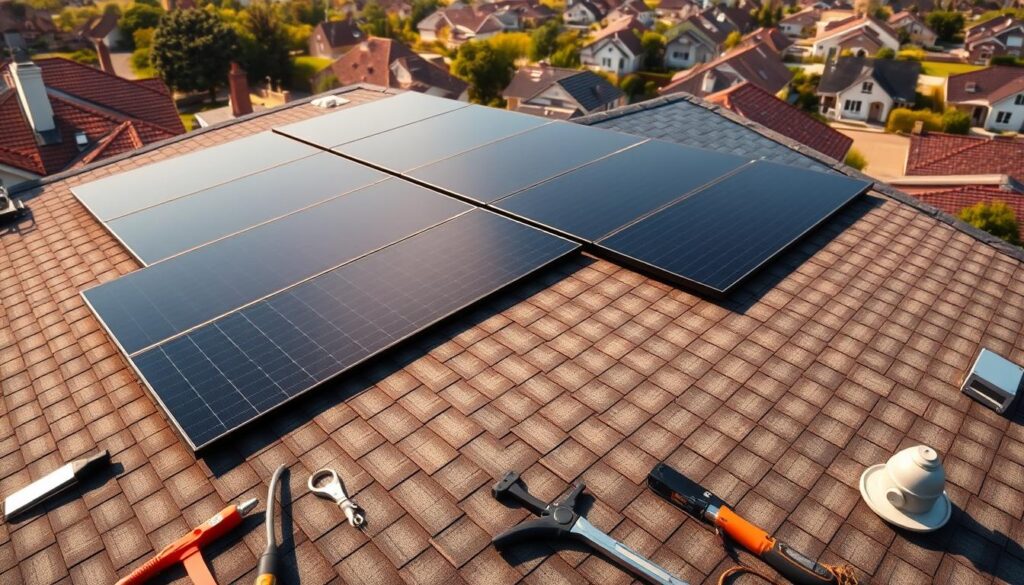
Understanding the total cost of solar panel installation is key. It involves looking at different factors that affect the price. This helps homeowners make smart choices about solar energy.
Factors that Influence Labor Fees
Labor costs are a big part of the total cost. Several things can change these costs, including:
- The complexity of the installation process
- The experience and qualifications of the installation team
- Local labor rates and regulations
Experts say, “Labor costs can vary a lot based on the installer’s skill and the project’s complexity.” A certified installer with a good reputation may charge more, but they usually do a better job.
Selecting a Certified Installer
Choosing a certified installer is very important. They make sure the solar panel system is set up right and works well. A certified installer has the training and experience needed for complex jobs.
When picking an installer, think about these things:
- Look for certifications from places like the North American Board of Certified Energy Practitioners (NABCEP)
- Check their work and ask for references
- Get quotes from different installers to find the best price
“A well-installed solar panel system can last for decades, providing significant long-term savings.” So, it’s worth spending time and effort to find a qualified installer.
By knowing what affects installation costs and choosing a certified installer, homeowners can get their solar panel system set up right. This ensures the best return on their investment.
Exploring Solar Financing Options
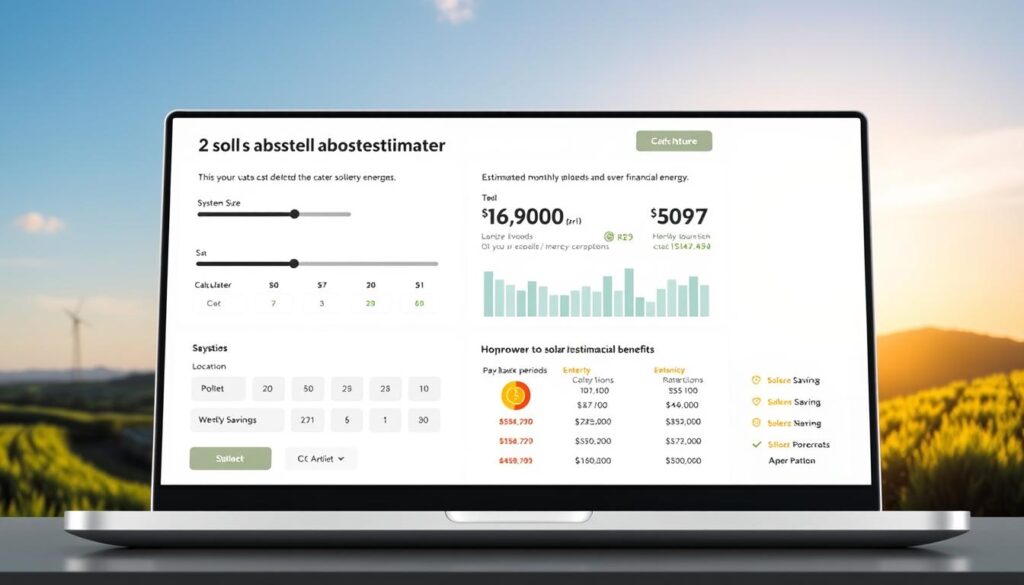
The cost of solar panels can seem high, but there are ways to make it easier. Homeowners have several options to choose from. Each has its own pros and cons.
Purchase vs. Lease Options
Homeowners usually pick between buying or leasing solar panels.
- Purchase: Buying solar panels can save money in the long run and may get tax breaks. But, it means a big upfront cost.
- Lease: Leasing solar panels costs less upfront and the company handles upkeep. But, you might save less money and lease payments could go up.
To estimate solar panel cost well, think about your money situation and future plans.
Solar Loans Explained
Solar loans are another good choice. They let homeowners borrow for solar panel setups.
- Benefits: Solar loans let you own the system but pay it off over time. Interest rates vary, and some loans have better terms.
- Considerations: You need to look at your credit score, loan term, and total loan cost, including interest.
Using a solar panel installation cost estimator can help figure out if a solar loan works for you.
The right financing choice depends on your personal situation. This includes your financial readiness, credit score, and energy goals. It’s smart to talk to financial advisors and solar experts to find the best plan for you.
The Importance of Return on Investment (ROI)
Understanding the return on investment (ROI) of solar panels is key for homeowners thinking about switching to renewable energy. ROI shows if installing solar panels is financially smart.
Several factors affect the ROI of solar panels. These include the system’s cost, installation fees, any incentives, and how much energy it will produce.
Calculating Your Payback Period
The payback period is how long it takes for savings from solar panels to match the initial cost. You need to know the system’s total cost and yearly savings on energy bills to figure it out.
For example, if your system costs $15,000 and saves $1,500 yearly, it takes 10 years to break even. A solar panel cost calculator can give you a closer estimate.
| System Cost | Annual Savings | Payback Period |
|---|---|---|
| $15,000 | $1,500 | 10 years |
| $20,000 | $2,000 | 10 years |
| $25,000 | $2,500 | 10 years |
Long-term Savings with Solar Energy
Solar panels save money on energy bills for years after the initial cost is paid back. They last about 25 to 30 years, giving you nearly two decades of free electricity.
Also, solar panels can increase your home’s value. Homes with solar panels often sell for more than those without.
To get the most from your investment, use a solar panel system price estimator. It gives you an accurate quote and helps you see the savings. This tool lets you compare systems and pick the best one for your budget and energy needs.
Assessing Your Roof’s Suitability
Checking if your roof is right for solar panels is key. A good roof can make your solar system work better.
Roof Orientation and Angle Considerations
The way your roof faces and its angle matter a lot. Solar panels work best on roofs that face south. But, roofs that face east or west can work too, just not as well.
The roof’s tilt is also important. The best tilt depends on where you live. Usually, matching your location’s latitude is best for solar panels.
Evaluating Shade Impact
Shade can hurt your solar panels’ performance. Trees or buildings that block sunlight can lower your system’s efficiency. It’s important to check how much shade your roof gets.
A home solar cost estimator tool can help with this. It can show how shade affects your roof’s solar power. Some tools even suggest the best solar panel layout for your roof.
By looking at your roof’s orientation, angle, and shade, you can decide if it’s good for solar panels. This way, you can get the most out of your solar energy investment.
Real-Life Case Studies
More people are choosing renewable energy, like solar panels. Their stories help those thinking about solar. We learn about the good and bad of solar panels from these experiences.
Success Stories from Homeowners
Many homeowners have cut their energy bills with solar panels. A family in California saved over $1,000 a year. They used a solar panel cost estimator to plan.
“We were amazed at how quickly our solar panels paid for themselves,” they said. “The solar panel pricing calculator helped us understand the initial investment and the long-term benefits.”
In New York, a homeowner used a solar panel pricing calculator. They found the cost was more affordable than they thought. “The solar panel pricing calculator was instrumental in our decision-making process,” they said.
“The best way to get started is to quit talking and begin doing.” This quote shows the proactive approach many homeowners have towards solar panels.
Analysis of Cost Savings in Different Regions
The savings from solar panels vary by region. Sunlight, local incentives, and energy costs affect savings. For example, Arizona homeowners save about $1,500 a year, while Washington homeowners save around $800.
To save more, homeowners should use a solar panel cost estimator. It considers their location and energy needs. This way, they can make smart choices and save thousands over time.
In conclusion, real-life stories show solar panels can save a lot of money. By learning from others and using tools like solar panel cost estimators, homeowners can make the best choice for their energy needs.
Common Myths about Solar Panel Costs
Many people think solar panels are too pricey. But, the truth is, the cost has dropped a lot. Now, it’s easier than ever to go solar.
Debunking Misconceptions
Some believe solar panels are only for the wealthy. But, with better tech and more competition, prices have fallen. Plus, there are incentives to help with the cost.
To estimate solar panel cost right, look at a few things. These include the system size, panel type, and the installer. This way, you can understand the costs and decide wisely.
Addressing Concerns Over Initial Investment
The first cost of solar panels might look high. But, think about the long-term savings. Solar panels can cut down on bills and even raise your home’s value.
There are also ways to finance solar panels, like loans or leases. This makes the start-up cost easier to handle. And, don’t forget about tax credits that can lower the initial cost. With the right info, you can choose solar energy confidently.
Tools to Help You Estimate Costs
Figuring out the cost of solar panels can seem hard. But, there are tools to make it easier. Homeowners can use online tools and talk to solar experts for a clear cost estimate.
Online Estimator Tools Overview
Online tools give a quick way to estimate solar panel costs. They ask for your location, energy use, and roof details. With a solar panel cost calculator, you can see costs and savings right away.
Some tools also show the payback period and ROI. This helps homeowners decide if solar panels are a good choice. Search for “solar companies near me” to find these tools.
Consulting with Solar Professionals
Online tools are helpful, but talking to solar experts gives a deeper look at costs. They check your roof, your energy use, and give a detailed quote.
When you talk to solar pros, ask important questions. For example:
- What is the total cost of the solar panel system?
- What is the expected payback period?
- What kind of warranty and maintenance are provided?
By using online tools and talking to solar experts, homeowners can understand costs well. This helps them make a smart choice about solar energy.
Making the Decision to Go Solar
Thinking about switching to solar energy? It’s important to know the costs. A typical home solar system costs between $15,000 and $30,000 before you get any discounts. Costs like local labor, permits, and equipment can change the price a lot.
Use a residential solar panel cost estimator to figure out the exact cost for your home. Discounts from the government and your state can also help lower the initial cost.
Key Considerations for a Successful Installation
Before buying, think about how much energy you use and if your roof is good for solar panels. Choosing a certified installer is key for a good installation. With the right tools and knowledge, you can make a smart choice and enjoy solar energy benefits.
Choosing the Right System for Your Home
When picking a solar panel system, think about the type of panels, their efficiency, installation costs, and any discounts you can get. By carefully looking at these points, you can find a system that fits your energy needs and offers a good return on investment.




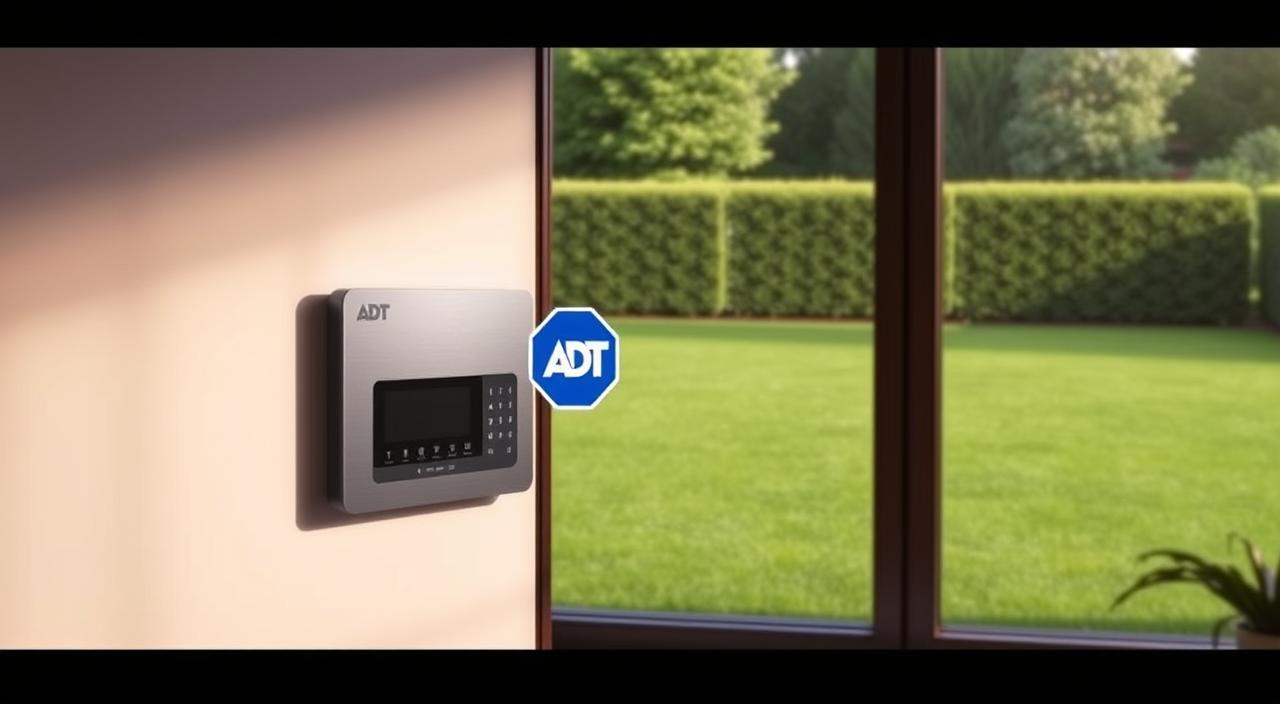
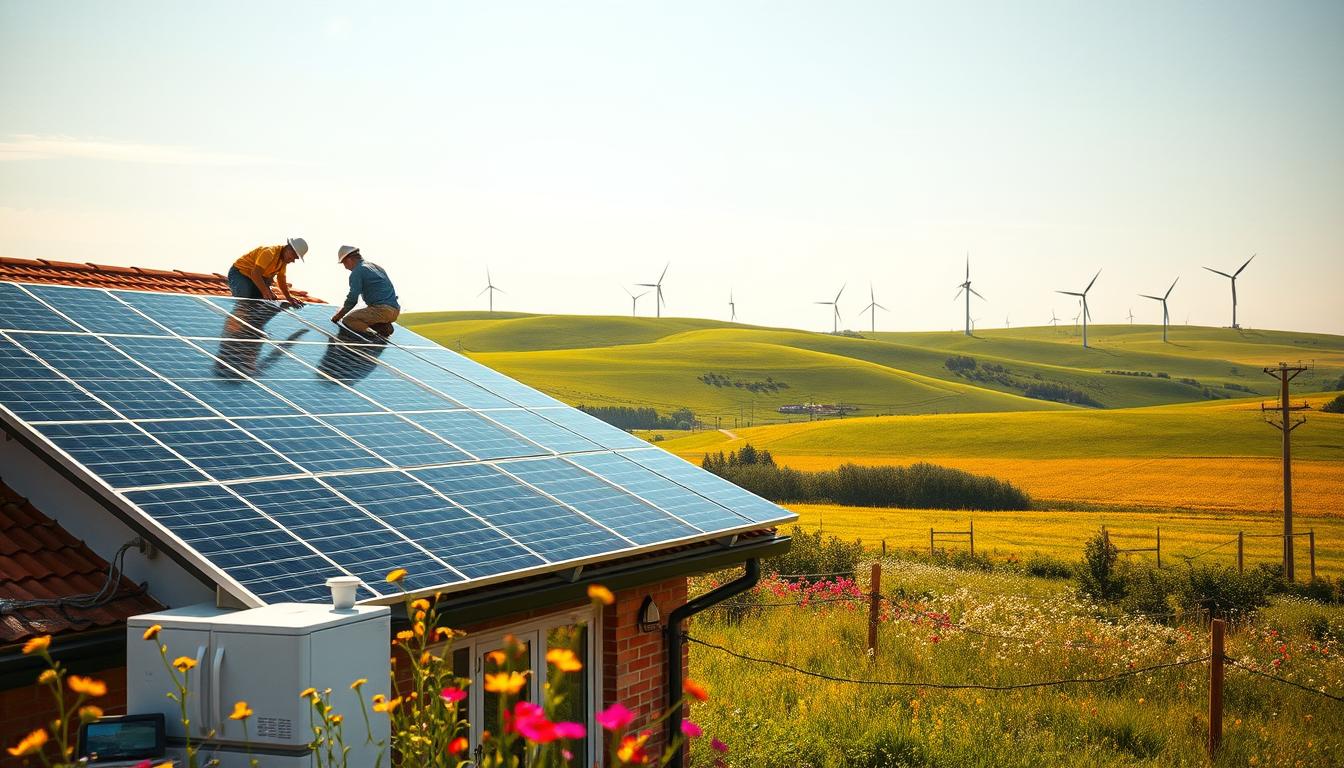
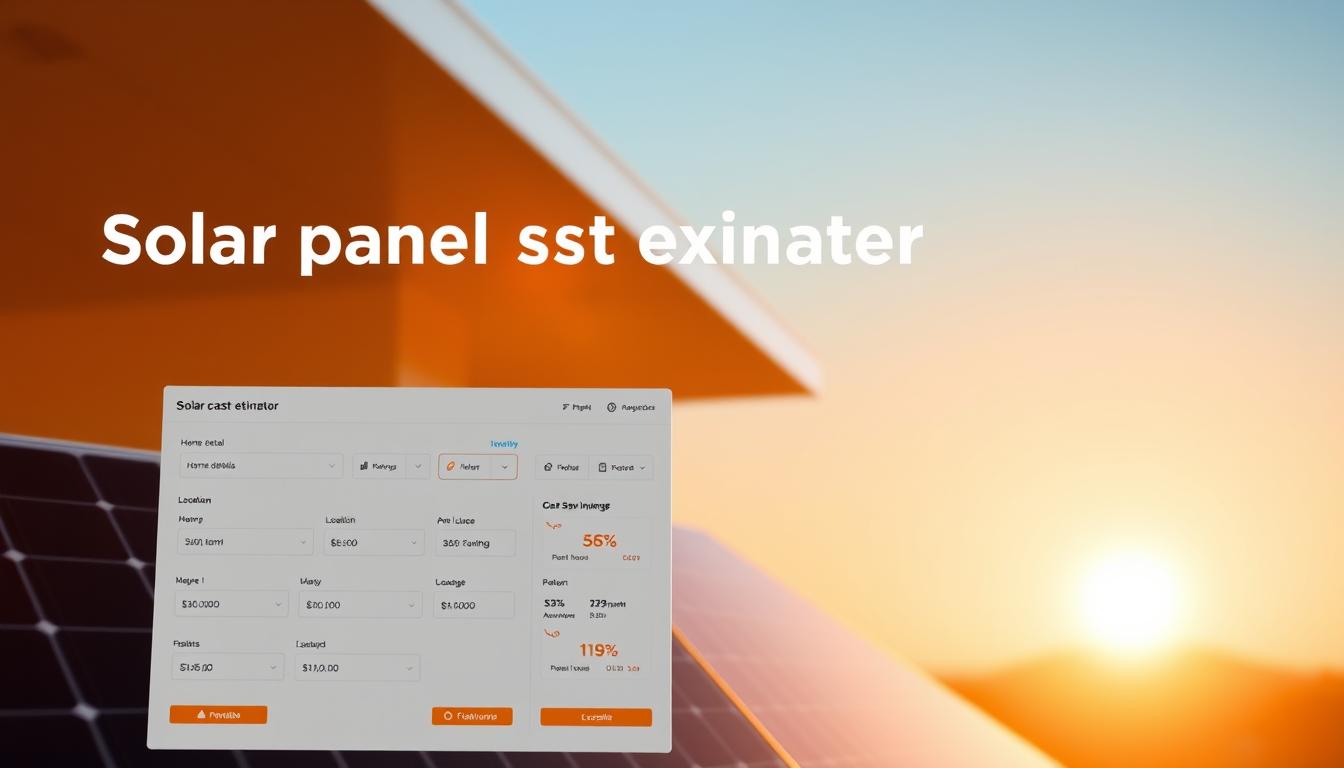
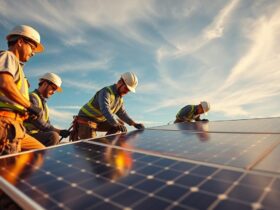

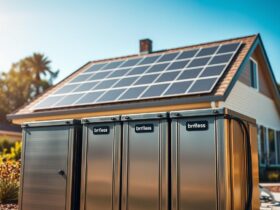
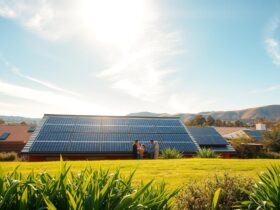
Leave a Reply